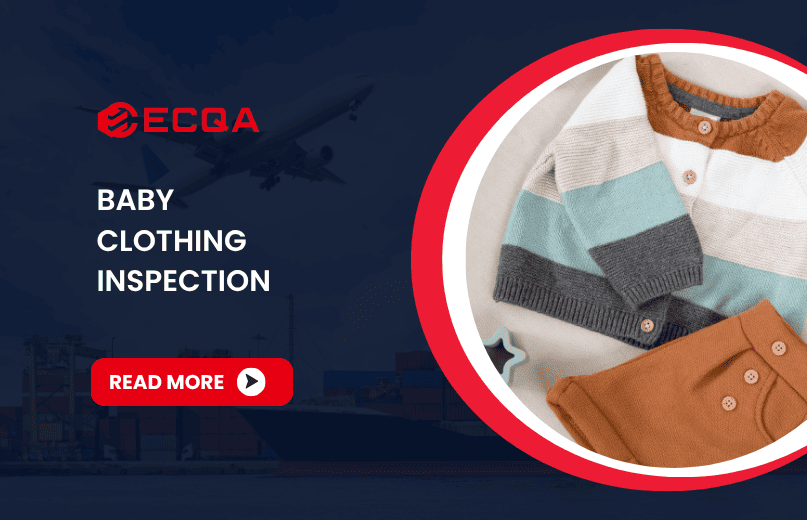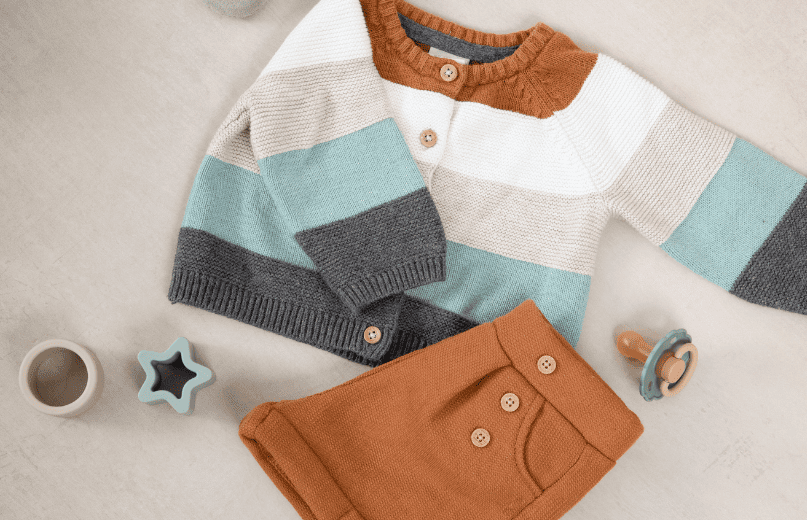
Baby Clothing Inspection
Baby clothing inspection requires strict adherence to international and national safety regulations. Infant garments are among the most heavily regulated textile products, and compliance is both a legal requirement and a commercial necessity.

In the United States, the Consumer Product Safety Improvement Act (CPSIA) mandates limits on lead and phthalates, choking hazard prevention, tracking labels, and third-party laboratory testing for all products intended for children under 12. Additional requirements apply to products for children under 3 years old. The Federal Flammability Standard (16 CFR 1610) applies to certain garments, especially sleepwear.
In the European Union, REACH regulations restrict hazardous substances such as azo dyes, nickel, and formaldehyde. The EN 14682 standard prohibits cords or drawstrings in the neck area of clothing for children under 7 to prevent strangulation hazards.
Despite regional differences, the core safety principles are consistent:
- Garments must not have sharp edges or detachable small parts that could pose choking risks.
- Fasteners such as snaps, zippers, and buttons must be securely attached.
- Fiber content, care instructions, and size labels must be accurate and visible.
- Materials must pass chemical safety tests for allergens and carcinogens.
- Sleepwear must comply with flammability requirements.
Industry certifications such as OEKO-TEX® Standard 100 provide additional assurance that textiles are free from harmful substances.
Key Criteria for Baby Clothing Inspection
Visual and Workmanship Checks
Inspectors verify that garments are symmetrical, properly aligned, and cleanly presented. Stitching must be consistent, seams must be straight and reinforced, and no loose threads or skipped stitches should be present. Defects in workmanship can compromise garment durability and cause skin irritation.
Labeling and Tagging
All garments must display size, country of origin, fiber composition, and care symbols in accordance with local requirements. CPSIA-compliant tracking labels are required for products sold in the United States. Incorrect or missing labels can result in customs delays or legal non-compliance.
Functional Testing
Functional checks confirm that snaps, zippers, and closures operate smoothly and align correctly. Closures must withstand moderate pulling force while remaining safe to release. Elastic waistbands must stretch within defined tolerances. For bundled products, all items must match in size and fit.
Colorfastness and Fabric Handling
Fabrics must retain their original color after washing and must not cause staining or allergic reactions. Inspections assess dry and wet rub colorfastness, wash test results, and uniform dyeing across production lots.
Small Part and Sharp Edge Safety
All trims, hardware, and decorative elements must be firmly attached. No sharp edges or rough finishes are acceptable, particularly in areas that contact an infant’s skin.
Fabric Testing and Material Quality Assurance
Softness and Breathability
Fabrics must be soft, breathable, and hypoallergenic. Testing includes hand feel evaluation, air permeability measurement, and moisture absorbency assessment.
Chemical and Heavy Metal Testing
Materials must comply with CPSIA and REACH restrictions on substances such as lead, formaldehyde, phthalates, and azo dyes. Valid Material Safety Data Sheets (MSDS) and independent laboratory reports must accompany production.
Durability and Shrinkage
Fabrics must maintain their shape and integrity after repeated washing. Tests include shrinkage measurement, tensile strength, pilling resistance, and tear strength evaluation.
Material Standards and Certifications
Materials should meet recognized certifications such as GOTS-certified organic cotton, verified bamboo blends, and OEKO-TEX® Standard 100 compliance. Certifications must be verifiable and traceable.
Common Defects Found During Baby Clothing Inspection
- Stitching and Assembly Defects: Open seams, missed stitches, untrimmed threads, and misaligned panels.
- Contamination and Cleanliness Issues: Stains, dust, chemical odors, and inconsistent dye batches.
- Sizing and Labeling Inconsistencies: Incorrect sizing, mislabeled garments, and missing tracking labels.
- Hardware Failures: Weak snaps, malfunctioning zippers, and prohibited drawstrings.
- Packaging Errors: Incorrect SKUs, missing suffocation warnings, and incomplete packing documentation.
Case example: A European retailer recalled over 10,000 infant rompers when decorative buttons detached due to weak stitching. This incident highlights the importance of pull testing and thorough quality checks.
Baby clothing inspection requires rigorous attention to safety standards, workmanship, material quality, and regulatory compliance. By implementing structured inspection programs, collaborating closely with suppliers, and partnering with qualified third-party specialists, brands can reduce risks, ensure compliance, and maintain consumer trust.
It is essential to choose a partner with proven expertise in infant garment inspection, familiarity with CPSIA, REACH, and OEKO-TEX requirements, and on-site laboratory capabilities. Inspection reports should clearly classify defects, and inspectors must be specifically trained in children’s apparel standards.

 Request Free Sample Report
Request Free Sample Report